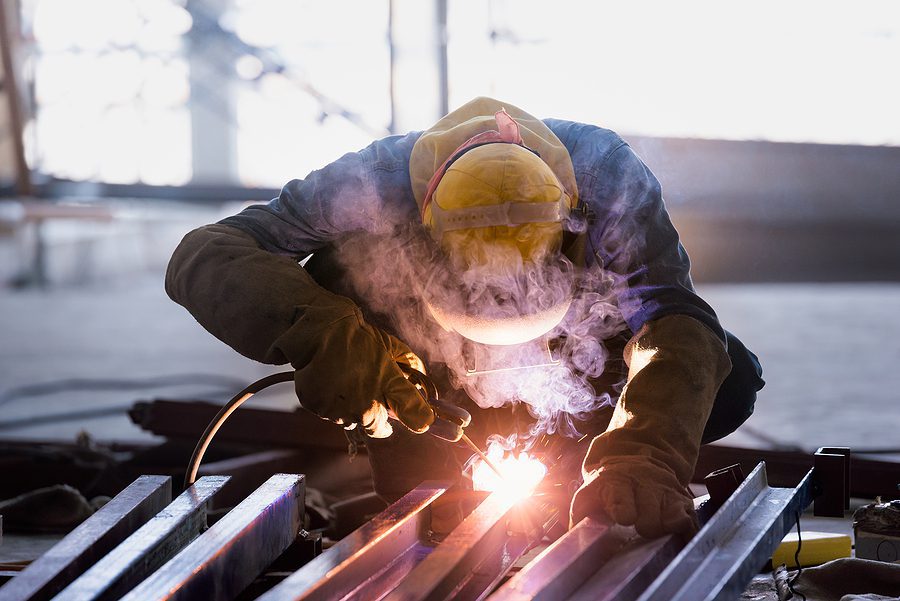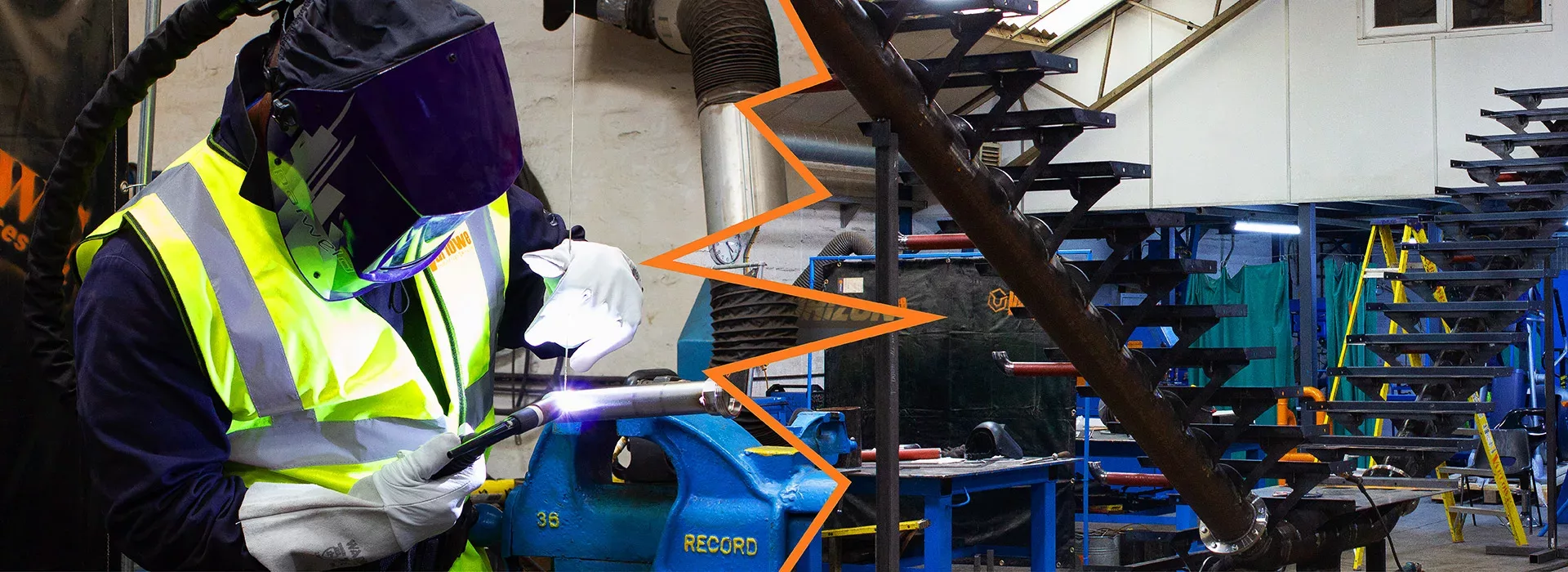All Regarding Welding: Secret Insights Into Techniques and Best Practices for Success
Welding includes a range of strategies, each matched for specific materials and applications. Recognizing these techniques, such as GMAW, SMAW, and TIG, is crucial for attaining excellent results. Additionally, the ideal equipment and security methods can not be overlooked. As prep work and troubleshooting play critical functions in the welding process, mastering these elements can considerably improve the high quality of the last item. What are the vital factors that ensure a successful weld?
Recognizing Various Welding Methods
Welding techniques include a variety of approaches, each suited to specific applications and products. Among the most typical methods are Gas Metal Arc Welding (GMAW), Secured Steel Arc Welding (SMAW), and Tungsten Inert Gas Welding (TIG) GMAW, likewise referred to as MIG welding, is popular for its rate and flexibility, making it excellent for thin materials. SMAW, or stick welding, is preferred for its simplicity and performance in exterior atmospheres, specifically with thicker steels. TIG welding uses precision and control, making it ideal for elaborate work and non-ferrous steels (Belgrade). Each method has its one-of-a-kind advantages and factors to consider, permitting welders to pick the most effective approach based on the project's demands, product type, and preferred outcomes. Recognizing these methods is necessary for successful welding
Important Welding Devices and Devices
While various welding strategies require specific abilities, the ideal tools and devices are similarly necessary for accomplishing high quality results. Important welding equipment includes welding equipments, which vary depending upon the method-- such as MIG, TIG, or stick welding. Safety equipment, consisting of helmets, gloves, and aprons, guarantees safety and security and comfort during the procedure. In addition, fixtures and clamps assist safeguard products in position, guaranteeing accuracy in welds. Consumables like welding poles, cord, and protecting gas are additionally important parts that affect the high quality of the weld. Additionally, tools such as cutters and grinders help with surface area prep work and post-weld completing, adding to a professional outcome. Investing in premium devices eventually improves the effectiveness and efficiency of welding projects.
Safety Practices in Welding
Correct safety and security methods are essential in the welding sector to secure workers from prospective hazards. Welders must put on proper personal safety equipment (PPE), consisting of safety helmets with proper shading, handwear covers, and flame-resistant clothes. Ample air flow is crucial to lower direct exposure to damaging fumes and gases produced during the welding procedure. Furthermore, workers need to be trained in the appropriate handling of welding devices to stop mishaps. Fire precaution, such as maintaining flammable materials far from the welding area and having fire extinguishers easily available, are required. Regular evaluations of equipment and work areas can aid determine possible dangers prior to they lead to mishaps. By adhering to these security techniques, welders can develop a more secure working setting and minimize threats connected with their profession.
Readying Products for Welding
Preparing products for welding is an important step that greatly influences the top quality and integrity of the last item (Welding). Correct prep work involves cleaning the surfaces to eliminate impurities such as oil, corrosion, and dirt, which can compromise the weld. Methods such as grinding, sanding, or utilizing solvents are frequently utilized to achieve a tidy surface area. In addition, making sure that the products fit with each other well is necessary; gaps can cause weak welds. It's likewise important to think about the placement and positioning of the elements, as this will affect the ease of welding and the final end result. Picking the suitable filler product and making certain compatibility with the base steels is essential for achieving strong, durable welds.
Tips for Getting High-Quality Welds
Achieving high-quality welds needs interest to information and adherence to best practices throughout the welding procedure. Proper joint preparation is crucial, making certain surfaces are tidy and free from contaminants. Selecting the appropriate filler material and welding strategy based upon the base steels is vital for excellent bonding. Keeping regular traveling speed and angle while welding can protect against issues and advertise harmony. In addition, regulating heat input is crucial; excessive heat can result in warping and damaged joints. Consistently evaluating the welds throughout the procedure enables immediate adjustments if necessary. Employing ideal post-weld treatments, such as cleaning and stress and anxiety relief, can enhance the durability and integrity of the weld, inevitably making certain an effective outcome.
Troubleshooting Common Welding Issues
Welding often presents difficulties that can impact the top quality and stability of the last product. Usual problems such as porosity, inconsistent weld beads, and getting too hot can emerge, each requiring certain repairing techniques. Comprehending these issues is vital for welders to improve their abilities and achieve ideal outcomes.
Porosity Problems Clarified
Although porosity can commonly be forgotten, it continues to be a critical issue in welding that can jeopardize the integrity of an ended up item. Porosity describes the presence of tiny gas pockets within the weld bead, which can deteriorate the joint and lead to premature failure. This problem usually occurs from impurities, moisture, or improper protecting gas coverage during the welding process. To minimize porosity, welders should verify that the base materials are completely dry and tidy, make use of appropriate protecting gases, and preserve constant welding criteria. Regularly checking the tools and setting can also assist determine potential concerns before they show up in the weld. Addressing porosity properly is crucial for accomplishing strong, durable welds that satisfy top quality criteria.

Irregular Weld Beans
Inconsistent weld grains can significantly affect the top quality and toughness of a completed product. Different aspects add to this problem, including incorrect traveling speed, inaccurate amperage setups, and inconsistent electrode angles. When the welder relocates too rapidly, a grain might appear narrow and do not have infiltration, while relocating too gradually can create too much accumulation. In addition, using the wrong amperage can cause either damaging or excessive spatter, both of which concession weld honesty. The welder's method, such as inconsistent lantern activity, can also lead to irregular bead appearance. To mitigate these problems, welders need to concentrate on maintaining consistent, regulated movements and guaranteeing appropriate devices setups to attain uniformity in their welds. Consistency is key to attaining reputable and strong welds.
Overheating and Warping Issues
Too much heat throughout the welding process can result in significant getting too hot and buckling problems, influencing the structural welding table for sale stability of the workpiece. These problems frequently materialize as distortion, which can endanger alignment and fit-up, making more assembly testing. Elements adding to overheating include the option of welding criteria, such as voltage and travel speed, along with the type of material being welded. To minimize these issues, welders ought to keep regular traveling speed and ideal warm input great site while keeping track of the workpiece temperature level. Additionally, preheating or post-weld warmth therapy can help relieve stress and anxieties triggered by fast cooling - Montana Mobile Welding and Repair Belgrade. Normal evaluation and adherence to finest techniques are vital in protecting against getting too hot and guaranteeing the longevity and dependability of bonded structures
Regularly Asked Concerns
What Are the Profession Opportunities in the Welding Sector?
The welding sector uses varied career opportunities, including positions as welders, educators, engineers, and examiners. Specialists can work in manufacturing, building, aerospace, and auto industries, benefiting from solid demand and competitive salaries in numerous duties.
Exactly How Can I Enhance My Welding Speed Without Sacrificing High Quality?
To improve welding speed without sacrificing quality, one need to practice effective methods, maintain tools, maximize setups, and improve hand-eye sychronisation. Routine training and looking for feedback can likewise significantly add to achieving faster, top notch welds.
What Certifications Are Available for Welders?
Numerous certifications exist for welders, consisting of those from the American Welding Society (AWS), the National Center for Building Education And Learning and Study (NCCER), and numerous industry-specific companies. These qualifications enhance employability and show ability effectiveness.
Just How Does Welding Impact the Qualities of Metals?
Welding affects the residential properties of steels by changing their microstructure, which can cause adjustments in stamina, firmness, web and ductility. Warm input and cooling prices during the process greatly influence these material qualities.
Can I Weld Dissimilar Metals Together?
